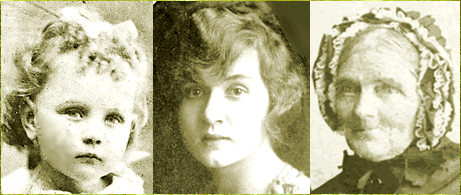|
|
Admixture occurs when two or more previously separated populations inter-breed. |
|
|
The number of times a DNA sequence repeats at an STR marker |
|
Autosome |
A chromosome not involved in sex determination. Humans have of 23 pairs of chromosomes: 22 pairs of autosomes (numbered 1-22), and one pair of sex chromosomes (the X and Y chromosomes) |
|
|
Tests compare the linked blocks of DNA across the 22 autosomal chromosomes. Closer relatives have larger fragments of DNA in common |
|
Cambridge Reference Sequence (CRS) |
The standard sequence of mitochondrial DNA (mtDNA) against which all other mtDNA is compared. The results of a mtDNA test cite only the markers that differ from this standard. The original CRS was sequenced in 1981 & revised in 1999 as the revised Cambridge Reference Sequence (rCRS) - (CRS is commonly used even when referring to rCRS) |
|
|
A piece of DNA (inside the nucleus of a cell) containing genes. It is the structure by which hereditary information is physically transmitted from one generation to the next |
DNA
( Deoxy ribo Nucleic Acid) |
The genetic material of organisms. Nuclear DNA is present in the cell nucleus and is usually structured into double strands, wound together as the familiar double helix. Within DNA are the codes that form proteins. All the DNA required to build your whole body is contained within every cell of your body |
|
Dominant / Recessive |
In a matched pair, each chromosome has genes that control the same function (eg freckles / no freckles). A dominant gene on one chromosome will override a recessive gene on the other |
|
|
(DNA Y-chromosome Single copy sequence) is the 'name' of a particular STR marker on the Y-chromosome (eg DYS388, DYS390). |
|
|
The basic unit of heredity; a segment of DNA which contains the genetic code to make a certain protein or part of a protein, and is usually linked to a particular function |
|
Genetic Genealogy |
A new field of family history research, mainly comparing the Y-chromosome and/or mtDNA and/ or autosomal DNA to prove or disprove biological connections. The Y-chromosome links the strictly paternal line (father to son), whilst mtDNA is inherited from our mother's mothers. Autosomal DNA tests are most useful if the shared ancestor was within 6 generations. |
|
Genome |
All the genetic material (although commonly refers to the DNA on the chromosomes). In humans, 46 chromosomes (23 pairs) make up the genome; approximately 2 metres in length packaged into a tiny nucleus – a complete copy is found in each cell of the body |
|
|
A region of two paired chromosomes where at least one of the two alleles from one person's pair of chromosomes matches at least one of the two alleles from a different person's pair of chromosomes throughout the entire region. A half-identical region may be either identical by descent (IBD) or identical by state (IBS) |
|
|
A genetic population group associated with early human migrations and which identifies an individual today with their ancient ancestral geographic region, eg the Y-chromosome haplogroup most common to males living along the western coasts of Europe is Haplogroup R1b. Haplogroups are determined by SNPs. There are also mitochondrial haplogroups |
|
|
A combination of alleles on a chromosome that are likely to be transmitted together (so haplotypes are determined by STRs) |
Identical by Descent (IBD) |
A matching segment of DNA shared by two or more people that has been inherited from a recent common ancestor |
|
|
A matching segment of DNA shared by two people not inherited from a recent common ancestor but rather created by chance |
|
|
A marker is a gene or DNA sequence at a specific physical location (locus) on a chromosome, the inheritance of which can be followed from one generation to the next. The greater the number of markers tested between 2 individuals, the better defined is their relationship |
Mitochondrial DNA (mtDNA) |
The circular DNA contained inside the mitochondria. mtDNA is passed from a mother to her offspring (both sons and daughters), but only her daughters will pass it on. Mitochondra in cells convert energy for use by the cell |
Most Recent Common Ancestor (MRCA) |
The ancestor shared most recently between two individuals, the MRCA can be predicted by comparing their DNA |
|
|
Any inheritable change in DNA, mutations usually occur as a result of miscopying by cell enzymes |
|
Non-Paternity Event |
The genetic term describing why the DNA of a family member does not match that of his alleged father, perhaps due to adoption, illegitimacy, etc |
|
|
When two parents share an ancestor, the family tree of their child will have less individual ancestors than otherwise |
|
|
The physical and behavioural characteristics of an individual that are influenced by both genes and environment |
|
|
X- and Y-chromosomes are the chromosomes involved in sex determination. Females have two X-chromosomes; males have one X- and one Y-chromosome |
SNP (Single Nucleotide Polymorphism) |
(pronounced ‘snip’) A single DNA ‘letter’ differs from person to person, produced (like a 'typo') by a copying mutation. Nearly all SNPs have mutated only once in human history so many people share the same SNP |
STR (Short Tandem Repeat) |
A stretch of DNA where a small sequence repeats itself several times. An STR mutation adds or subtracts one or more repeats |

